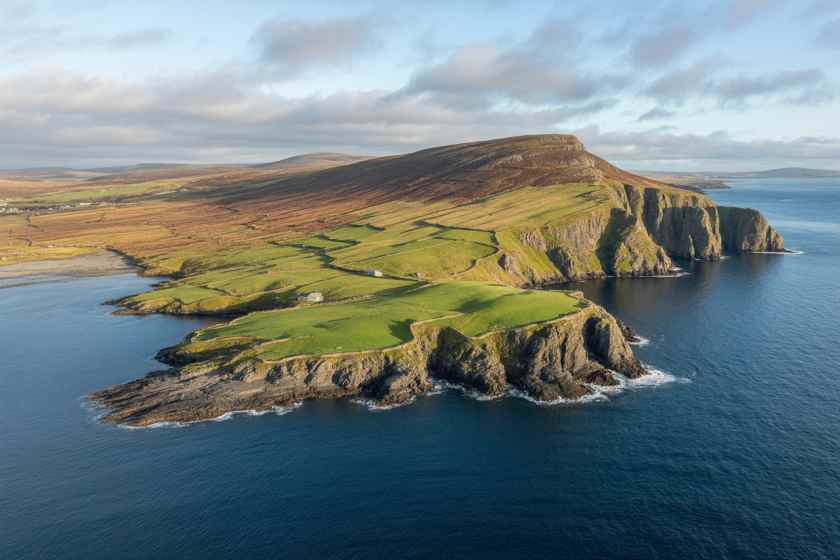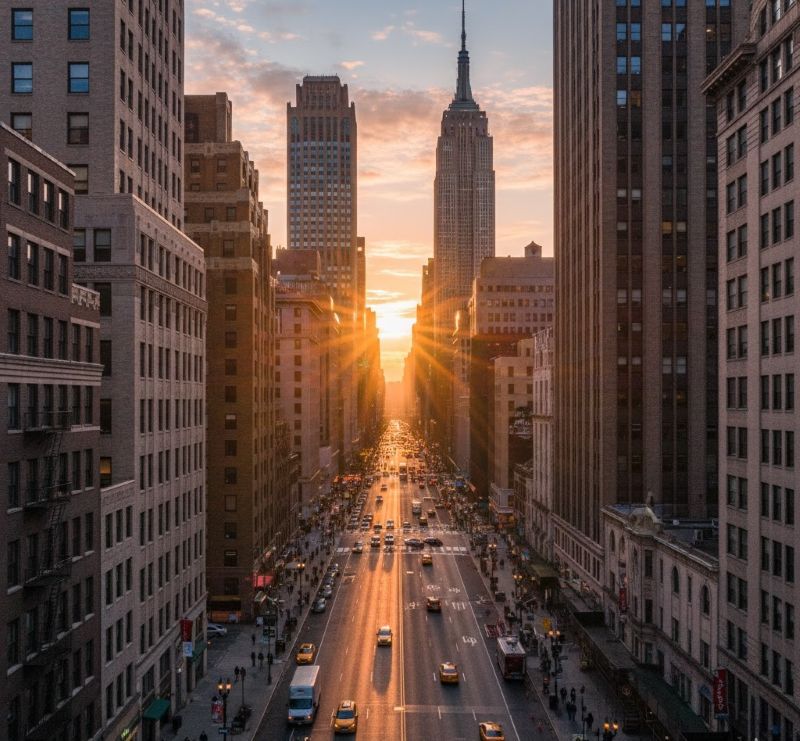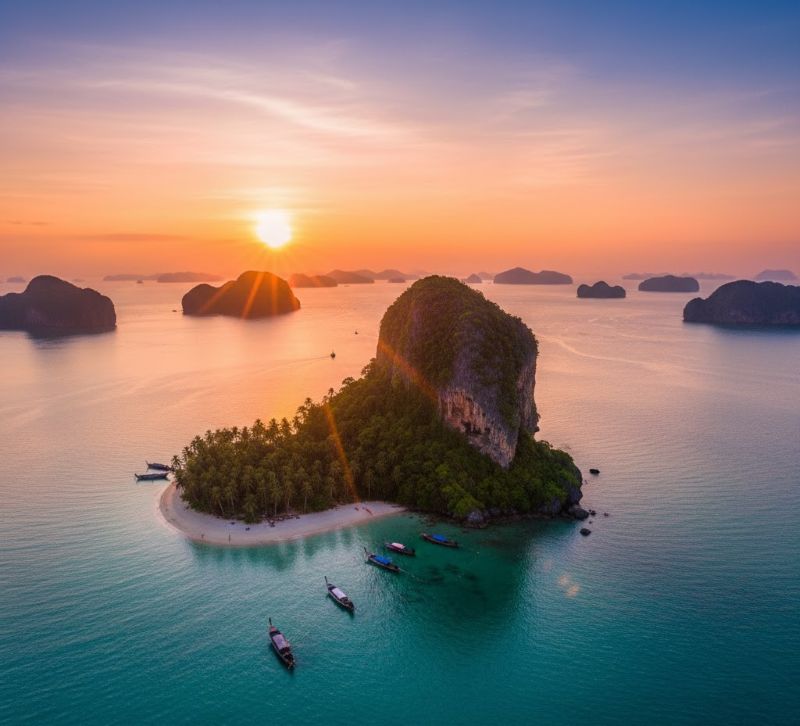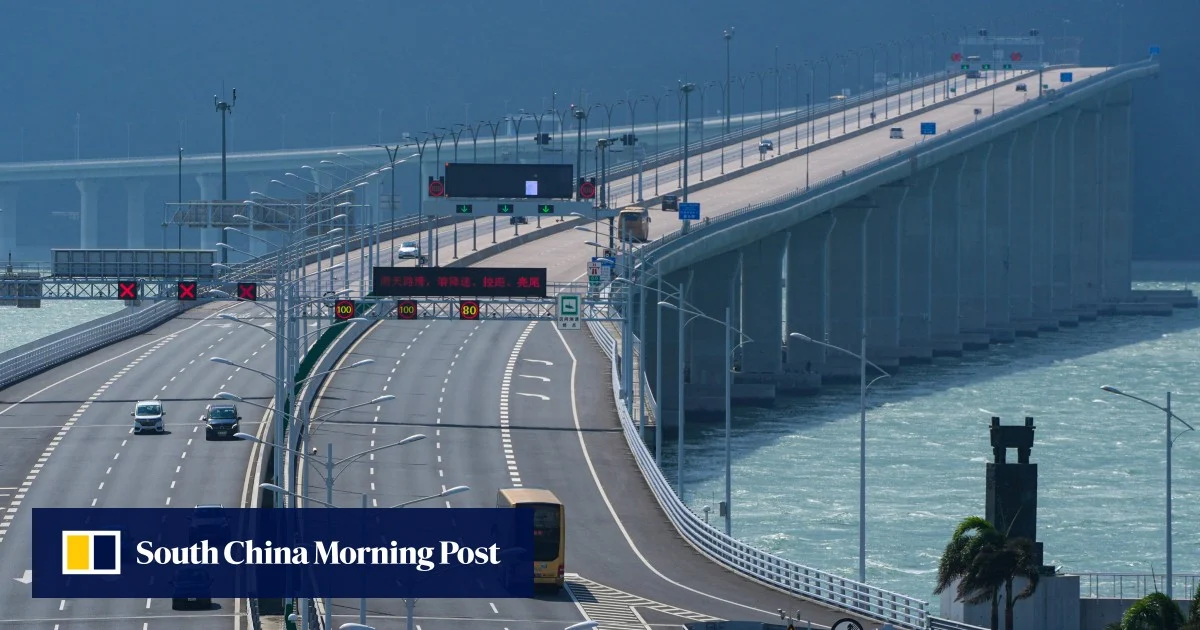Published on
November 24, 2025
The United States joins Canada, Australia, Spain, France, and Germany in a sensational travel shift where YouTube shapes every traveller’s next move. This global shift is unmistakable. And as the United States joins Canada, Australia, Spain, France, and Germany in this fast-changing landscape, travellers everywhere recognise that the rules of trip planning have transformed forever. Today, YouTube sits at the centre of this transformation. It inspires. It informs. It shapes choices. It influences how people explore the world. And it builds confidence before a journey even begins.
The change is powerful. Travellers now want to see destinations before they step foot there. They want real movement, real voices, real experiences. And as the United States joins Canada, Australia, Spain, France, and Germany, this shared evolution signals something monumental: travel inspiration has become inseparable from video. People no longer rely on long brochures or static photos. Instead, they turn to immersive clips, cinematic drone views, walking tours, food experiences, and honest reviews filmed by real people. YouTube has become a living library where every traveller finds clarity.
This transition is not accidental. It is intentional. Tourism authorities around the world recognise this shift. They respond with official YouTube channels, digital-first campaigns, and detailed video guides. And, once again, the United States joins Canada, Australia, Spain, France, and Germany in this strategic push to meet travellers where they already spend their time. Moreover, this coordinated approach proves that video is no longer just entertainment. It is now a planning tool. It is a research platform. It is a trusted resource that shapes expectations and reduces uncertainty.
Travellers appreciate this clarity. They want to know how cities feel at night. They want to understand the rhythm of local markets. They want to see how public transport works. And through this new reality — where the United States joins Canada, Australia, Spain, France, and Germany — YouTube gives every visitor a front-row seat to cultures they have not yet experienced. Transitions become easier. Decisions become faster. Journeys become more meaningful.
The sensational shift in global travel patterns is also rewriting how destinations present themselves. Countries compete visually. Iconic cities and hidden regions receive equal chances to shine. A video filmed in Havana, Kyoto, Vancouver, Jaipur, or Marseille can go viral overnight. And because the United States joins Canada, Australia, Spain, France, and Germany in embracing this high-impact medium, travellers receive polished storylines, detailed itineraries, and powerful emotional cues that influence travel like never before.
In addition, YouTube reshapes how people prepare. Packing lists, climate tips, visa explanations, cultural etiquette, and on-ground logistics are now available in seconds. Travellers learn faster. They adapt sooner. They make better choices. And as the United States joins Canada, Australia, Spain, France, and Germany continue fuelling this movement, YouTube becomes the new compass for modern exploration.
This introduction sets the stage for understanding how video-driven decision-making has become the defining force of the travel world — a world where visual knowledge empowers every step.
United States – How Official Video Content Shapes Travel Across a Vast and Complex Landscape
The United States, home to one of the world’s most diverse tourism ecosystems, has developed a deeply structured, government-backed video framework that supports travellers from the moment they begin planning.
While Brand USA provides travellers with cinematic films showcasing American culture, iconic cities, and road-trip routes, one of the most significant contributors to video-led travel guidance is the National Park Service (NPS).
Across the NPS website, many national parks include “Plan Your Visit” videos, covering:
- Safety protocols on trails
- Wildlife interaction rules
- Weather hazards and seasonal closures
- Orientation for first-time hikers
- Accessibility details
- Transport navigation inside and around parks
For destinations as vast as Yosemite, Yellowstone, Grand Canyon, or Glacier National Park, written content has never been enough. The scale, terrain, and climate variability require visual explanation.
Impact on Tourism in the USA
These government-endorsed videos have become crucial tools in:
- Reducing safety incidents
- Preparing visitors for unpredictable conditions
- Promoting less-visited parks and historic sites
- Spreading visitor numbers across seasons
- Enhancing responsible tourism
For a country as geographically extreme as the United States, video is no longer helpful — it is essential.
Germany – Precision, Planning, and Digital Clarity Through the GNTB
Germany’s tourism strategy mirrors the country’s reputation for structure and precision. The German National Tourist Board (GNTB) has created one of Europe’s most coordinated digital ecosystems, where video content plays a central role in helping travellers navigate Germany’s rich cultural and natural assets.
Across the Germany.travel platforms and official YouTube channels, viewers find detailed visual introductions to:
- UNESCO World Heritage Sites
- Christmas markets
- Cycling routes on the Rhine and Moselle
- Castles and river landscapes
- Urban neighbourhoods and seasonal highlights
Germany uses video as a preparation tool, providing clarity on public transport systems, climate variations, road-trip itineraries, and cultural experiences.
Impact on Tourism in Germany
Germany’s video-led clarity:
- Increases traveller confidence
- Encourages longer multi-day stays
- Directs attention to regions beyond Berlin, Bavaria, and the Rhine Valley
- Supports regional tourism development
- Provides essential seasonal orientation
The result is a more informed traveller and a more evenly distributed tourism economy.
Thailand – The National Power of “Amazing Thailand” Video Storytelling
Few destinations integrate visual storytelling into their tourism identity as passionately as Thailand. The Tourism Authority of Thailand (TAT) operates multiple official YouTube channels, presenting a vibrant mosaic of Thai life, from the bustle of Bangkok’s street markets to the calm of northern temples.
Official videos provide insight on:
- Local etiquette inside temples
- Floating markets and river transport
- Thai street food culture
- Island-hopping essentials
- Seasonal festivals
- Responsible interactions with wildlife
Impact on Tourism in Thailand
This official emphasis on video:
- Reinforces Thailand’s position as a multi-experience destination
- Inspires travellers to explore regions beyond Phuket and Bangkok
- Supports small communities and local cultures
- Strengthens post-pandemic tourism recovery
- Guides visitors toward environmentally responsible choices
Thailand’s YouTube presence is not just promotional — it is deeply educational, shaping how visitors engage with Thai culture before they arrive.
France – Explore France and the Cinematic Power of Emotion
In France, video-based tourism has been elevated to an art form. Through Explore France, official campaigns blend cinematic photography, gentle narration, and immersive soundscapes to present a compelling portrait of:
- Provence’s lavender fields
- Bordeaux’s wine regions
- Parisian culture and architecture
- Alpine villages
- French gastronomy
France places strong emphasis on mood, atmosphere, and emotional storytelling — a reflection of the country’s cultural identity.
Impact on Tourism in France
France’s official video strategy:
- Strengthens France’s appeal as the world’s most visited country
- Encourages interest in rural, lesser-known regions
- Promotes off-season travel and seasonal diversity
- Enhances the emotional bond between viewer and destination
In France, the power of video lies not only in information but in inspiration.
Spain – A Short-Video Revolution Fueled by Turespaña and Spain.info
Spain has fully embraced the global dominance of short-form video, turning it into a central tool for destination discovery. Through spain.info and official YouTube channels, Turespaña showcases the vibrant textures of Spanish life:
- Flamenco nights in Seville
- Modern art in Valencia
- Beaches of Catalonia
- Food traditions across Madrid
- Historic city centres and festivals
These short clips provide immediate sensory immersion — ideal for travellers browsing quickly on mobile devices.
Impact on Tourism in Spain
Short-video visibility has transformed how travellers engage with Spain:
- Influencing seasonal decisions (especially summer vs autumn)
- Inspiring travel to Galicia, the Basque Country, or Extremadura
- Encouraging culinary exploration
- Supporting heritage tourism
Spain has become a leader in bite-sized, meaningful travel storytelling.
Canada– Destination Canada and the Power of Narrative Video
Canada’s tourism identity is built on space, nature, and story — and its official tourism body uses narrative videos to help travellers understand its vastness. Destination Canada’s long-form YouTube content highlights:
- The rugged wilderness of British Columbia
- Quebec’s cultural cities
- Ontario’s urban-nature blend
- The majestic Canadian Rockies
These videos don’t simply show scenic landscapes. They illustrate essential planning elements such as weather, travel distances, seasonal changes, and Indigenous cultural experiences.
Impact on Tourism in Canada
Narrative videos:
- Help visitors grasp the scale of Canadian travel
- Encourage multi-city itineraries
- Inspire long-haul travellers to commit to larger, extended trips
- Support sustainable, region-based tourism growth
Canada proves that storytelling can be both informative and transformative.

Japan – JNTO’s Masterclass in Video-Integrated Trip Planning
Japan stands out as one of the world’s most sophisticated adopters of video-led planning. The Japan National Tourism Organization (JNTO) integrates YouTube content directly into official “Plan Your Trip” tools.
Their videos guide visitors through:
- Tokyo subway navigation
- Onsen etiquette
- Regional itineraries across Hokkaido, Okinawa, and Kyushu
- Seasonal festivals
- Packing advice for Japan’s distinctive climate shifts
- Cultural expectations and social norms
Impact on Tourism in Japan
Japan’s video-centred model:
- Reduces confusion around trains and transport
- Enhances cultural awareness
- Supports distribution across all 47 prefectures
- Encourages deeper exploration beyond major cities
In Japan, video is not supplementary — it is a structural part of national tourism education.
Australia – A Cinematic Identity Built Through Government-Backed Video
Australia’s global image has been shaped in part by the sweeping cinematic visuals produced by Tourism Australia and Tourism Research Australia (TRA). Official videos bring travellers face-to-face with:
- Sydney Harbour
- Melbourne’s laneways
- The Great Barrier Reef
- The Outback
- National parks and wildlife
These videos communicate logistical essentials, including:
- Distance between cities
- Climate variability
- Regional weather patterns
- Wildlife safety
- Seasonal timing
Impact on Tourism in Australia
Video-driven guidance:
- Attracts high-value long-stay travellers
- Supports sustainable tourism, especially in nature-based regions
- Shapes realistic expectations of distance and climate
- Encourages exploration beyond major cities
Australia’s video strategy is built for both inspiration and practical clarity.
United Kingdom – VisitBritain’s Influence on Traveller Imagination
The United Kingdom, through VisitBritain and VisitEngland, now treats YouTube as a core driver of trip inspiration. Official government research confirms that visitors use video to:
- Understand British public transport
- Preview cultural experiences
- Identify seasonal events
- Explore cities and rural landscapes
Official videos highlight London, Manchester, Edinburgh, the Lake District, coastal towns, and UNESCO-listed heritage sites.
Impact on Tourism in the UK
Video content:
- Strengthens regional appeal beyond London
- Supports “screen tourism” influenced by films and television
- Aids preparation for complex rail networks
- Encourages year-round tourism
Videos help demystify the UK’s diverse landscapes and cultural fabric.
India – Landmark Government Research Confirming Video Influence
India’s Ministry of Tourism has formally documented the central role of social video in travel behaviour. Across official reports, the government confirms that YouTube guides travellers in:
- Cultural understanding
- Food exploration
- Transport planning
- Itinerary building
- Language preparedness
- Regional familiarisation
Official tourism channels showcase Goa, Kerala, Rajasthan, Tamil Nadu, and the Northeast, emphasising India’s cultural depth and geographical variety.
Impact on Tourism in India
India’s video-forward strategy strengthens:
- Domestic tourism
- International visitor preparedness
- State-level tourism development
- Cultural respect and responsible behaviour
Video plays a vital role in navigating India’s extraordinary diversity.
Global Overview of Video-Led Trip Planning Strategies
The table summarises how ten major countries officially integrate YouTube into national tourism strategy. Each government uses video to enhance clarity, inspire travel, and improve visitor confidence. While some nations prioritise cinematic storytelling (France, Australia), others depend on practical guidance (Japan, United States). Short-form content shapes seasonal and spontaneous planning (Spain, Thailand), whereas long-form videos support complex travel across vast landscapes (Canada, India). Collectively, these strategies reveal a global consensus: video is no longer a supplement but a central pillar of modern trip planning.
Comparison Table of 10 Countries Using Official Video-Based Travel Guidance
| Country | Official Tourism Body | Primary Role of Video | Key Video Focus Areas | Impact on Traveller Behaviour |
| United States | Brand USA / National Park Service | Structured visitor preparation | Safety, hiking, wildlife, city guides | Reduces incidents, spreads visitor flow, boosts regional tourism |
| Germany | German National Tourist Board (GNTB) | Digital-first destination guidance | Heritage sites, markets, routes, landscapes | Increases confidence, encourages longer stays and regional travel |
| Thailand | Tourism Authority of Thailand (TAT) | Visual cultural and regional immersion | Temples, food, islands, festivals | Promotes multi-region exploration, supports sustainable tourism |
| France | Atout France | Cinematic promotion & cultural storytelling | Vineyards, gastronomy, Paris, rural regions | Strong emotional engagement, boosts off-season and rural tourism |
| Spain | Turespaña / Spain.info | Short-form, high-reach visual content | Cities, beaches, festivals, food | Influences seasonal planning and regional distribution |
| Canada | Destination Canada | Long-form narrative travel guides | National parks, cities, road trips | Inspires long-haul itineraries and multi-city journeys |
| Japan | Japan National Tourism Organization (JNTO) | Integrated video trip-planning model | Transport, etiquette, festivals, regional trips | Reduces confusion, spreads tourism across all 47 prefectures |
| Australia | Tourism Australia / TRA | Cinematic long-form planning support | Reef, Outback, cities, wildlife | Boosts long-stay travel and eco-tourism preparedness |
| United Kingdom | VisitBritain / VisitEngland | Inspiration-driven social video strategy | Cities, countryside, events, transport | Supports regional growth & film-induced tourism |
| India | Ministry of Tourism (Government of India) | Research-backed social video influence | Culture, food, language cues, itineraries | Strengthens domestic & international travel planning |
In conclusion, the global rise of YouTube trip planning has become more than a trend. It has evolved into a defining force that reshapes how travellers think, decide, and move. As travellers explore destinations visually, the global culture of discovery grows stronger. And through this shift, the rise of visual research becomes impossible to ignore. People now trust what they can see. That is why YouTube has transformed into a universal library of real experiences.

At the same time, trip planning becomes more intuitive. Viewers learn faster. They compare options. They understand culture and logistics in seconds. And with every search, they embrace a new sense of confidence. Planning no longer starts with a brochure. It begins with a video.
Meanwhile, how video is rewriting the future of travel becomes clearer with each destination that adopts official visual guidance. Governments, too, now use video as a tool for clarity and safety. As a result, video holds authority in shaping responsible behaviour. And through this medium, destinations gain visibility. They highlight culture. They spread tourism benefits.
Step by step, the future shifts. Travellers want accuracy. They want authenticity. And they want representation. Video gives them answers instantly. Therefore, it naturally rewrites expectations. It sets new standards of transparency.
As this transformation continues, the future of travel becomes more interconnected. With visual information available anywhere, travellers explore confidently. They make better choices. They support new regions. And they engage more deeply with local culture.
Ultimately, travel becomes richer. Travel becomes more informed. And travel becomes more human. The world now embraces a powerful truth: when people can see a place, they can understand it. And with that understanding, YouTube, video, and trip planning truly redefine the global rise of modern exploration.



